Agriculture has played a fundamental role in the development of the United States, shaping its economy, society, and culture. From the early Indigenous agricultural practices to the modern industrialized farming systems, the history of agriculture in the U.S. reflects the evolution of technology, economic policies, and environmental changes. This article explores the key phases of agricultural development in the United States, highlighting significant events, innovations and challenges.
Indigenous Agriculture
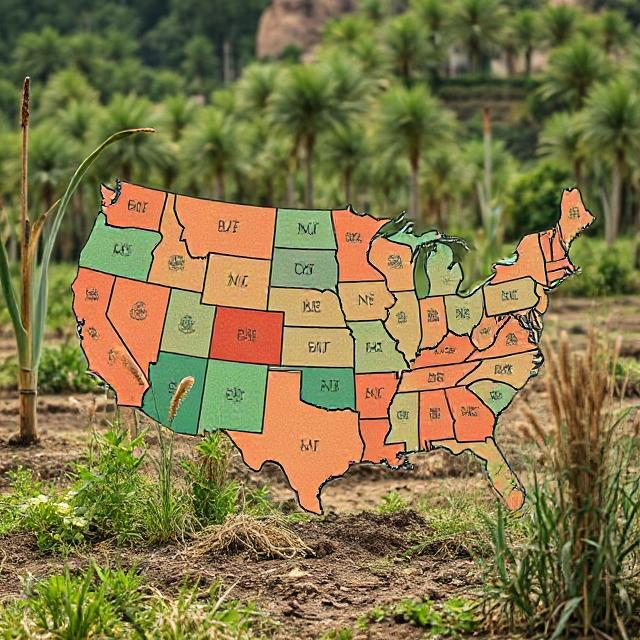
Early Practices
Long before European settlers arrived, Indigenous peoples practiced agriculture across North America. They cultivated a variety of crops, including maize (corn), beans, squash, and tobacco, utilizing techniques that were sustainable and well-adapted to local environments. The Three Sisters planting method, which involved growing maize, beans, and squash together, exemplified their understanding of companion planting and soil health.
Diverse Cropping Systems
Indigenous agricultural practices varied widely across different regions. For instance, in the Southwest, the Hohokam and Ancestral Puebloans developed irrigation systems to support agriculture in arid environments, growing crops like corn, beans, and melons. The Iroquois Confederacy in the Northeast practiced a mix of agriculture and hunting, cultivating crops in cleared forest areas.
Land Management
Indigenous agricultural practices included sophisticated land management techniques, such as controlled burns and crop rotation. These methods promoted biodiversity and maintained the health of ecosystems. Indigenous peoples had a deep spiritual connection to the land, viewing it as a source of life and sustenance. Their practices often ensured that the land remained fertile and productive for generations.
Colonial Agriculture

European Settlement
The arrival of European settlers in the early 17th century marked a significant shift in agricultural practices. Colonists brought new crops and livestock, such as wheat, barley, cattle, and pigs. The economy of the colonies became increasingly agrarian, with agriculture serving as the backbone of colonial life.
Regional Variations
Different regions developed distinct agricultural practices based on climate and soil conditions. The Southern colonies focused on cash crops like tobacco, rice, and indigo, relying heavily on enslaved labor. In contrast, the Northern colonies cultivated grains, vegetables, and fruits, with smaller farms and mixed agriculture predominating. The diverse agricultural practices reflected the varying environmental conditions and economic needs of the regions.
The Role of Slavery
The introduction of slavery in the Southern colonies created a labor-intensive agricultural system that significantly impacted the economy and society. Enslaved Africans were forced to work on plantations, producing lucrative cash crops for export. This reliance on slavery laid the groundwork for deep social and economic divisions that would persist for centuries.
Economic Impact
The profitability of cash crops like tobacco and cotton led to the expansion of the plantation system, which became a defining feature of the Southern economy. The wealth generated by these crops contributed to the development of a distinct Southern culture and social hierarchy, further entrenching the institution of slavery.
The Agricultural Revolution
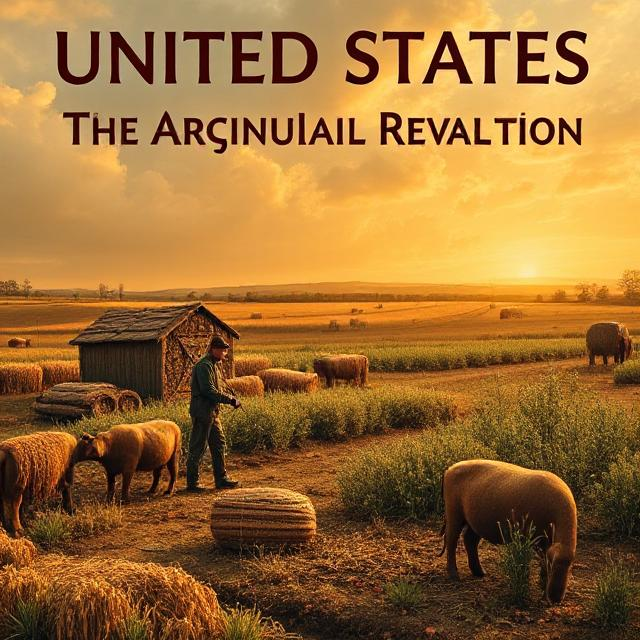
Technological Innovations
The late 18th and early 19th centuries saw significant advancements in agricultural technology, contributing to what is often referred to as the Agricultural Revolution. Innovations such as the cotton gin, invented by Eli Whitney in 1793, revolutionized cotton production by significantly speeding up the process of separating cotton fibers from seeds.
Mechanization
The introduction of machinery, such as the mechanical reaper and the steel plow, transformed farming practices. Cyrus McCormick’s mechanical reaper (1831) allowed farmers to harvest crops more efficiently, increasing productivity and reducing the need for labor. These technological advancements contributed to the expansion of agriculture in the Midwest, enabling farmers to cultivate larger areas of land.
Westward Expansion
As the nation expanded westward in the 19th century, agriculture played a critical role in settlement and economic growth. The Homestead Act of 1862 encouraged westward migration by granting land to settlers who agreed to farm it for a specified period. This policy led to the establishment of new farms and communities across the Great Plains.
Challenges of Frontier Farming
While westward expansion provided opportunities for many, it also presented challenges. Farmers faced harsh weather conditions, pests, and soil depletion. The need for irrigation and sustainable farming practices became increasingly evident as settlers sought to cultivate the arid lands of the Great Plains. The introduction of new crops and farming techniques was essential for adapting to these challenges.
The Role of Railroads
The development of the railroad system in the 19th century was crucial for the expansion of agriculture. Railroads facilitated the transport of agricultural products to urban markets, allowing farmers to reach consumers far beyond their local communities. This connectivity helped establish national markets for agricultural goods, leading to increased competition and innovation.
The Rise of Commercial Agriculture
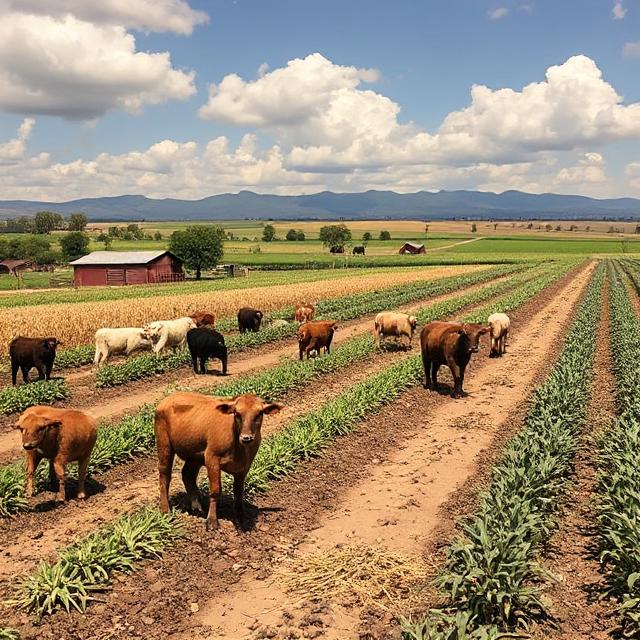
Industrialization and Agriculture
The late 19th century marked the rise of commercial agriculture, driven by industrialization and urbanization. Advances in transportation, such as railroads, facilitated the movement of agricultural products to urban markets. Farmers began to specialize in single crops for sale rather than subsistence farming.
The Role of Corporations
The emergence of agribusiness and corporate farming transformed the agricultural landscape. Large-scale farms and agricultural cooperatives began to dominate, leading to increased production and efficiency. However, this shift also raised concerns about the loss of small family farms and rural communities. The consolidation of farms into larger operations often resulted in economic challenges for smaller producers.
Agricultural Education and Research
The establishment of land-grant universities through the Morrill Act of 1862 promoted agricultural education and research. These institutions focused on improving farming practices, developing new crops, and addressing challenges faced by farmers. Agricultural extension services provided valuable resources and support to rural communities.
Impact on Farming Practices
Research conducted at land-grant universities led to the development of new agricultural techniques and technologies. Innovations in crop rotation, soil conservation, and pest management helped improve yields and sustainability. The dissemination of knowledge through extension services empowered farmers to adopt best practices and adapt to changing conditions.
The Dust Bowl and Agricultural Policy

Environmental Challenges
The 1930s brought significant environmental challenges, culminating in the Dust Bowl—a series of severe dust storms that devastated the Great Plains. Poor agricultural practices, combined with drought conditions, led to soil erosion and loss of arable land. Many farmers were forced to abandon their land, leading to widespread displacement and economic hardship.
Causes of the Dust Bowl
The Dust Bowl was exacerbated by several factors, including over-farming, lack of crop rotation, and the removal of native grasses that held the soil in place. The combination of these practices and prolonged drought created a perfect storm for ecological disaster. Families and communities were uprooted, leading to mass migrations, particularly to California.
Government Response
In response to the Dust Bowl, the federal government implemented various policies aimed at soil conservation and agricultural recovery. The Soil Conservation Service, established in 1935, promoted sustainable farming practices and soil preservation techniques. Programs such as the Civilian Conservation Corps provided employment and support for conservation efforts.
New Deal Programs
The New Deal programs introduced by President Franklin D. Roosevelt included initiatives to assist struggling farmers. The Agricultural Adjustment Act (AAA) sought to stabilize agricultural prices by reducing production. Farmers were paid to reduce crop acreage, which aimed to increase market prices for agricultural products.
The New Deal and Agriculture
The New Deal programs of the 1930s sought to address the economic challenges faced by farmers. Initiatives such as the Agricultural Adjustment Act aimed to stabilize prices and restore farmers’ purchasing power. The government also invested in infrastructure projects, improving irrigation and road systems to support agricultural development.
Long-Term Impacts
The policies implemented during the New Deal had lasting effects on American agriculture. They established a precedent for federal involvement in agricultural markets and set the stage for future agricultural policies. The emphasis on conservation and sustainable practices influenced subsequent generations of farmers.
Post-World War II Agricultural Transformation
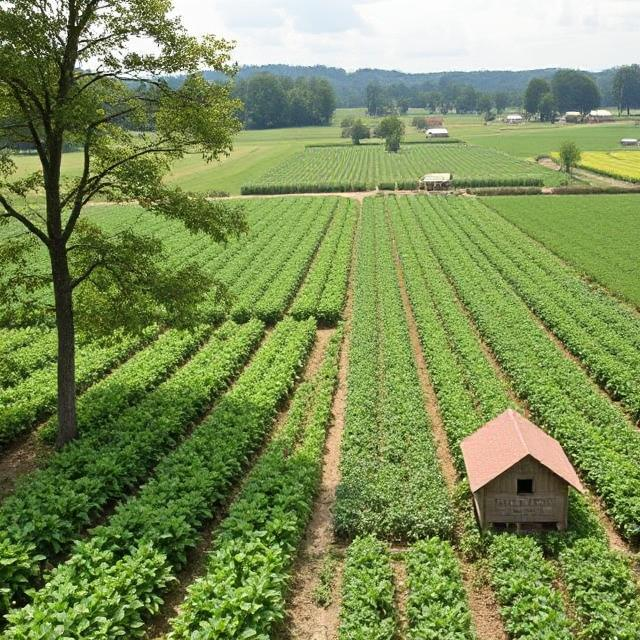
The Green Revolution
The post-World War II era witnessed the Green Revolution, a period marked by the introduction of high-yielding crop varieties, synthetic fertilizers, and pesticides. These innovations significantly increased agricultural productivity, particularly in developing countries, but also had profound effects on U.S. agriculture.
Technological Advancements
The development of hybrid seeds, particularly for crops like corn and wheat, revolutionized farming practices. The use of chemical fertilizers and pesticides allowed farmers to maximize yields and control pests that threatened crops. Mechanization continued to advance, with tractors and harvesting equipment becoming standard on farms.
The Rise of Agribusiness
The post-war period saw the rise of agribusiness, with large corporations playing an increasingly dominant role in food production and distribution. This shift led to the consolidation of farms and the emergence of multinational food companies that controlled various aspects of the agricultural supply chain.
Impact on Small Farmers
While agribusiness brought efficiency and innovation, it also posed challenges for small farmers. Many family farms struggled to compete with larger operations, leading to a decline in the number of small farms. The rural landscape changed as communities adapted to the new economic realities.
Environmental Concerns
The intensification of agriculture raised environmental concerns, including soil degradation, water pollution, and loss of biodiversity. The heavy use of chemical inputs and monoculture practices contributed to ecological imbalances and prompted calls for more sustainable farming practices.
The Modern Era of Agriculture
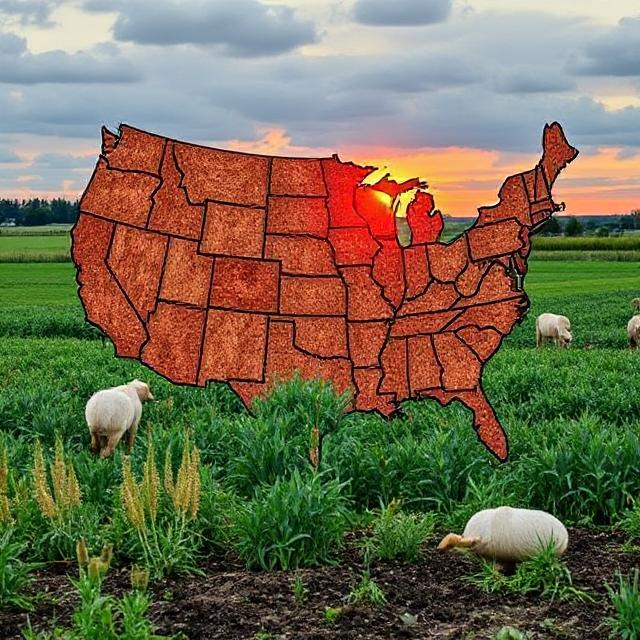
Sustainable Agriculture Movement
In response to the environmental challenges posed by industrial agriculture, the sustainable agriculture movement emerged in the late 20th century. This movement emphasized practices that promote ecological health, social equity, and economic viability. Techniques such as organic farming, permaculture, and agroecology gained popularity among farmers and consumers.
Organic Farming
Organic farming, which avoids synthetic fertilizers and pesticides, has seen significant growth in recent decades. Consumers’ increasing awareness of food quality and environmental impact has driven demand for organic products. Certification programs have emerged to ensure compliance with organic standards.
Technological Innovations
The 21st century has witnessed rapid technological advancements in agriculture, including precision farming, biotechnology, and digital agriculture. Technologies such as GPS, drones, and data analytics enable farmers to optimize resource use, reduce waste, and increase efficiency.
Genetically Modified Organisms (GMOs)
The introduction of genetically modified organisms (GMOs) has sparked debates about food safety, environmental impact, and corporate control of the food supply. While GMOs can enhance crop resilience and yields, concerns about biodiversity and long-term effects continue to shape public discourse.
Climate Change and Agriculture
Climate change poses significant challenges for agriculture, affecting crop yields, water availability, and pest dynamics. Farmers are increasingly adopting climate-smart practices, such as cover cropping, soil conservation, and water management, to adapt to changing conditions.
Policy Responses
Government policies and programs aimed at promoting sustainable practices and addressing climate change are becoming more common. Initiatives to support research, education, and financial assistance for farmers transitioning to sustainable methods are critical for building resilience in the agricultural sector.
Conclusion
The history of agriculture in the United States is characterized by a dynamic interplay of factors that have shaped its development over centuries. From Indigenous agricultural practices to the challenges of modern industrial farming, the evolution of agriculture reflects broader social, economic, and environmental changes. Understanding this history is essential for addressing contemporary agricultural challenges and ensuring a sustainable future for food production in the U.S.


